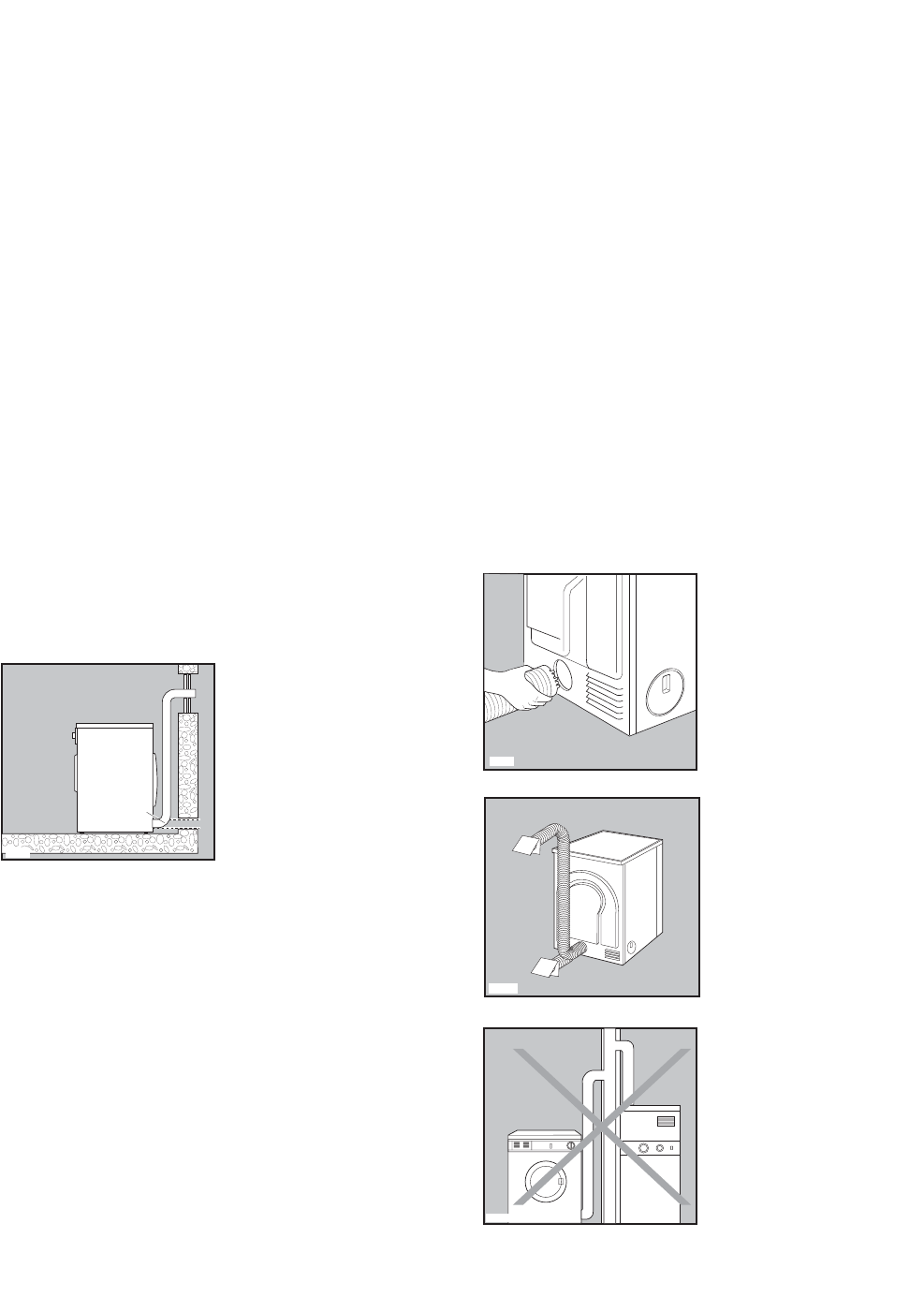
9
Positioning
The appliance may be placed in any room, provided the
following precautions are taken.
The appliance expels hot, very moist air. The rest of the
house must be able to easily absorb this moisture.
Normally, absorption is only possible in houses where
there is very little humidity. Otherwise, the room must
have ventilation towards the outside; generally, an open
door or window is enough.
The capacity of the venting circuit must be at least 150
m
3
/hour. Check that the air inlet and outlet vents are
unobstructed.
The best way of evacuating the moisture is through a vent
hose to the outside of the building. Use a special 100 mm
diameter flexible hose available on the market connected
to one of the air outlet vents with the collar supplied.
The unused outlets must be covered.
Never connect the air vent hose into an existing discharge
pipe or duct, as this could be dangerous, might disturb
neighbours and could cause the dryer to malfunction.
Advice: If the hose is long and the room temperature low,
the moisture might condense to water inside the hose.
This is an unavoidable natural phenomenon. To
prevent this water from lying in the hose or flowing back
into the tumble dryer, it is advisable to drill a small hole
(dia. 3 mm) in the lowest point of the hose and to place a
small container below it. (See picture, point A).
Connect the other end of the hose to an opening in a door
or window. Fit a suitable shield or point the hose
downwards to prevent any rain water and wind from
getting in.
Rain and wind shields for placing over openings usually
consist of valves or movable flaps. Periodically check the
shield since strong winds and other factors (rust, dirt) can
sometimes prevent it from opening, so causing problems
with air venting.
If you use a rain shield, check that the openings in it are
large enough to allow air to escape. Openings which are
too small restrict the flow of air.
Problems can be encountered in rooms fitted with a very
powerful central extractor fan. If you find that drying
times are too long, switch off the extractor or close its
grille whilst the tumble dryer is in use.
A highly effective solution is to simply poke the vent hose
through a window or skylight. This might however cause
problems in winter because the dryer will draw in very
cold (and often also very damp) air through the open
window, so increasing drying times and leading to very
high energy consumption.
If the dryer is fitted next to kitchen units, make sure
that the vent hose is not squashed. If the hose is
partially squashed, drying efficiency will be reduced,
resulting in longer drying times and higher energy
consumption.
If the hose is completely squashed, the safety cut-outs
with which the machine is fitted may operate.
Condensation discharge through
the vent hose
Condensation may be discharged either through a vent
outlet provided at the back or through the left or right side
outlet.
The vent hose collar is
placed in the rear vent outlet.
Remove the collar by pulling
it out of the vent outlet.
Screw the collar to the vent
hose.
Fit the hose into the required
vent outlet, and place vent
covers provided over the
unused outlets.
The vent hose must not
contain more than two bends
when it is placed in position
for operation.
You should NOT connect
the flexible vent hose to, for
example, a chimney or flue
pipe designed to carry the
exhaust from a fuel burning
heating appliance.
A
P0751
P0330
P0279S
P0055
Installation














